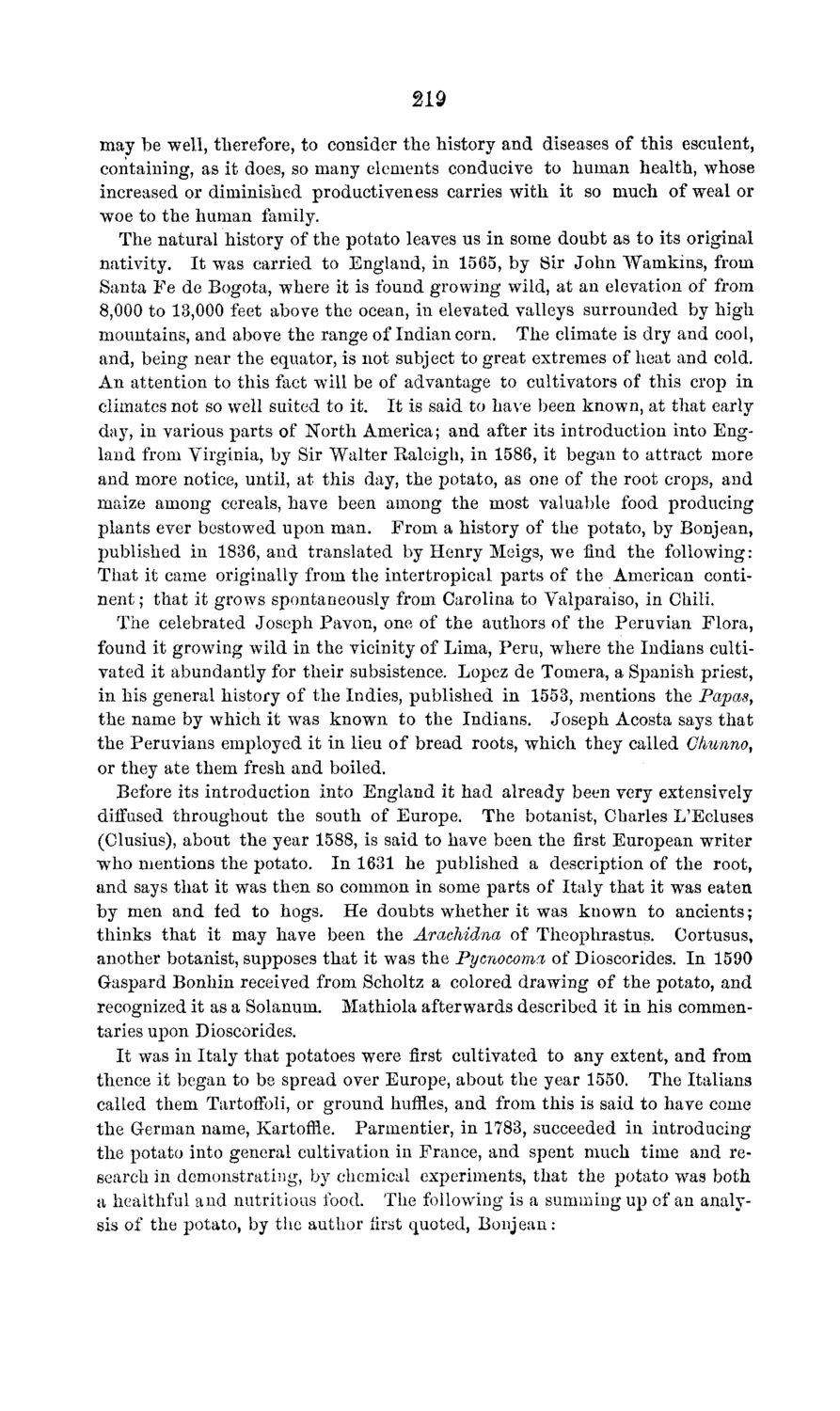| |
| |
Caption: Board of Trustees Minutes - 1869
This is a reduced-resolution page image for fast online browsing.

EXTRACTED TEXT FROM PAGE:
219 may be well, therefore, to consider the history and diseases of this esculent, containing, as it does, so many elements conducive to human health, whose increased or diminished productiveness carries with it so much of weal or woe to the human family. The natural history of the potato leaves us in some doubt as to its original nativity. It was carried to England, in 1565, by Sir John Wamkins, from Santa F e de Bogota, where it is found growing wild, at an elevation of from 8,000 to 13,000 feet above the ocean, in elevated valleys surrounded by high mountains, and above the range of Indian corn. The climate is dry and cool, and, being near the equator, is not subject to great extremes of heat and cold. An attention to this fact will be of advantage to cultivators of this crop in climates not so well suited to it. I t is said to have been known, at that early day, in various parts of N o r t h America; and after its introduction into England from Virginia, by Sir Walter Raleigh, in 1586, it began to attract more and more notice, until, at this day, the potato, as one of the root crops, and maize among cereals, have been among the most valuable food producing plants ever bestowed upon man. From a history of the potato, by Bonjean, published in 1836, and translated by Henry Meigs, we find the following: That it came originally from the intertropical parts of the American continent ; t h a t it grows spontaneously from Carolina to Valparaiso, in Chili. The celebrated Joseph Pavon, one of the authors of the Peruvian Flora, found it growing wild in the vicinity of Lima, Peru, where the Indians cultivated it abundantly for their subsistence. Lopez de Tomera, a Spanish priest, in his general history of the Indies, published in 1553, mentions the Papas, the name by which it was known to t h e Indians. Joseph Acosta says t h a t the Peruvians employed it in lieu of bread roots, which they called Chunno, or they ate them fresh and boiled. Before its introduction into England it had already been very extensively diffused throughout the south of Europe. The botanist, Charles L'Ecluses (Clusius), about the year 1588, is said to have been the first European writer who mentions the potato. I n 1631 he published a description of the root, and says that it was then so common in some parts of Italy that it was eaten by men and fed to hogs. He doubts whether it was known to ancients; thinks that it may have been the Arachidna of Theophrastus. Cortusus, another botanist, supposes that it was t h e Pycnocoma of Dioscorides. I n 1590 Gaspard Bonhin received from Scholtz a colored drawing of t h e potato, and recognized it as a Solanum. Mathiola afterwards described it in his commentaries upon Dioscorides. It was in Italy that potatoes were first cultivated to any extent, and from thence it began to be spread over Europe, about the year 1550. The Italians called them Tartoffoli, or ground hufnes, and from this is said to have come the German name, Kartoffle. Parmentier, in 1783, succeeded in introducing the potato into general cultivation in France, and spent much time and research in demonstrating, by chemical experiments, that the potato was both a healthful and nutritious food. The following is a summing up of an analysis of the potato, by the author first quoted, Bonjean:
| |